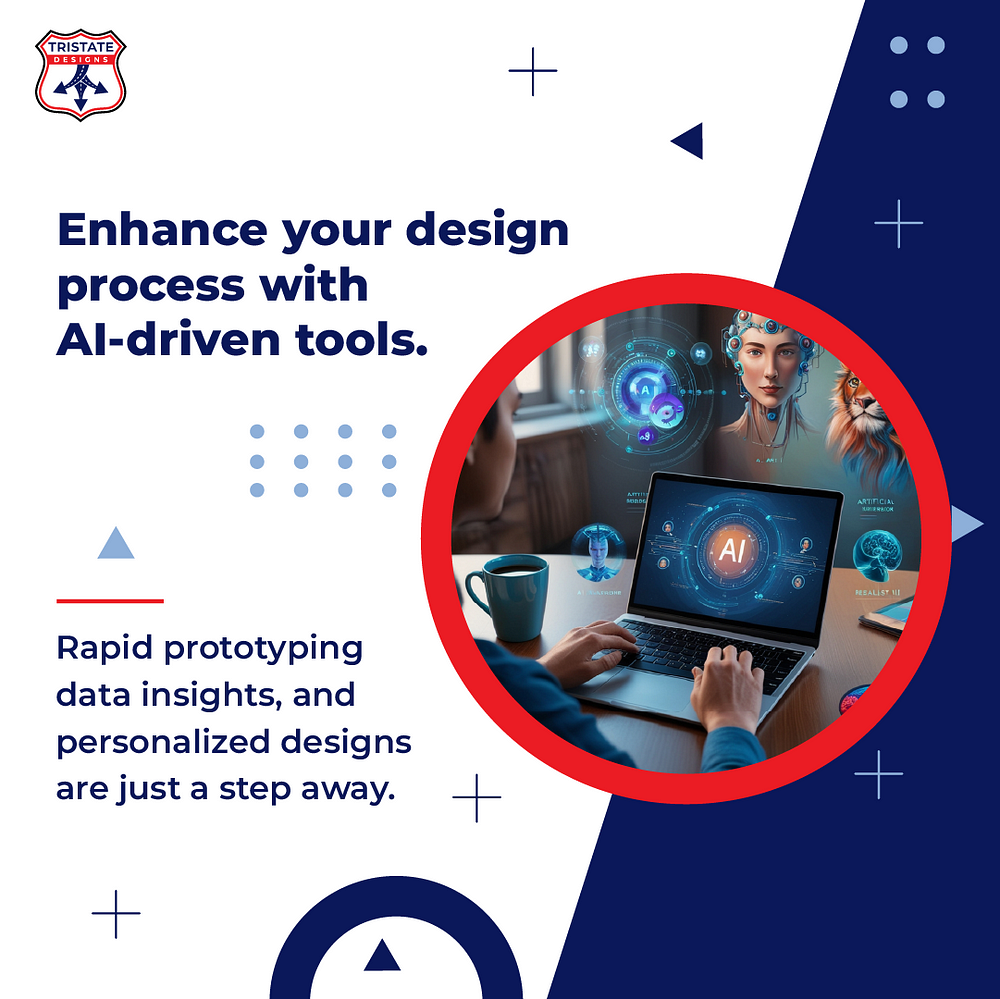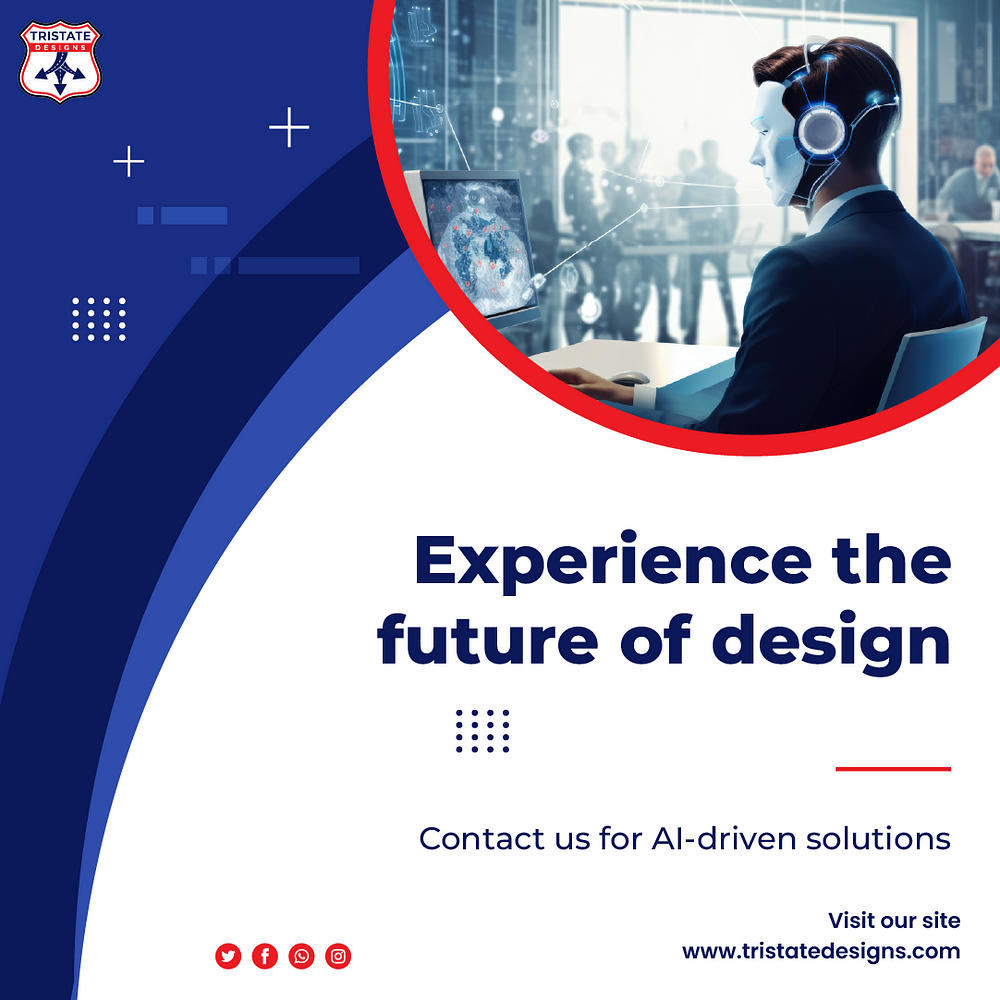In today’s fast-evolving digital landscape, the integration of Artificial Intelligence (AI) has...
How Do You Feel About AI-Driven Design Processes?

The role of artificial intelligence (AI) in design is rapidly expanding, offering innovative solutions and reshaping creative industries. From automated design tools to sophisticated AI-driven algorithms, designers now have the power to create more efficiently and effectively than ever before. However, this rise of AI-driven design has left many professionals feeling a mix of excitement, skepticism, curiosity, and uncertainty. In this blog, we’ll explore how AI is transforming design processes and how designers feel about these advancements.
Excitement: Unlocking New Possibilities
Many designers are excited about the potential AI brings to the table. AI-driven design tools like Adobe Sensei and Canva’s AI tools enable designers to focus more on the creative aspects of their work by automating repetitive tasks, such as resizing images or suggesting color palettes based on input. This allows designers to free up valuable time and energy, enabling them to focus on innovation and higher-level conceptual thinking.
Moreover, AI can help bring design to those without formal training. Small business owners or startup founders who need quick, cost-effective solutions can use AI-driven platforms to generate logos, banners, and other visual content without needing to hire a designer. AI democratizes design, making it more accessible to everyone.
Designers who embrace AI are unlocking new creative possibilities, experimenting with its capabilities, and integrating it into their workflows to optimize productivity and output. They see AI not as a replacement but as a collaborative partner that helps push the boundaries of creativity.
Skepticism: Will AI Replace Designers?
Not everyone in the design world views AI as a blessing. Some professionals feel skeptical, wondering if AI will eventually replace human designers altogether. After all, if AI can generate logos, layouts, and even advertisements, why would businesses need human designers anymore?
The truth is that while AI is good at handling certain tasks, it cannot replicate the depth of creativity, empathy, and emotional intelligence that human designers bring to the table. AI might be able to generate logos or provide design options, but it still requires human oversight to determine the best fit for a brand, convey the right emotions, and deliver a unique message. For example, while an AI-generated logo might follow design principles, it may not resonate emotionally with a target audience, a factor human designers can instinctively gauge.
Thus, AI is more of a tool for augmentation rather than replacement. Designers who understand this will be able to leverage AI to enhance their creative processes, not fear it as a replacement.
Interest: AI as a Creative Assistant
Many designers see AI as an incredibly useful creative assistant, intrigued by the possibilities of blending human creativity with machine learning. By utilizing AI, designers can delegate time-consuming tasks such as image resizing, typography adjustments, or even layout generation, thus allowing them to focus on higher-level creative thinking and strategy.
For instance, AI-powered design tools like Figma’s Auto Layout or InVision Studio provide intelligent layout generation, which means designers don’t have to worry about manually adjusting every little element. Similarly, AI can generate hundreds of logo variations, giving designers a broader canvas to work with.
This interest in AI as a helpful assistant opens the door to new workflows, encouraging designers to experiment and collaborate with the technology to push the creative envelope further. It’s about allowing AI to do the heavy lifting while the human designer handles the artistry and storytelling elements that machines simply cannot grasp.
Unsure: Navigating the AI Integration
On the other hand, some designers are unsure about how exactly to integrate AI into their processes. With the wide range of AI tools available, from Adobe Photoshop’s AI-based features to Sketch’s plugin ecosystem, it can be overwhelming to figure out where AI fits into the overall design process.
Some designers may worry that by incorporating AI too early in the process, they may lose their creative spark or become overly reliant on the technology. Others may be unsure of the limitations and potential pitfalls of AI, fearing that it might diminish the uniqueness of their designs by adhering to generic patterns or trends.
For designers who feel uncertain, the key is to take small steps in adopting AI. They can start by using AI to automate simpler, more repetitive tasks, allowing them to maintain control over the more creative aspects. By gradually integrating AI tools into their workflow, they can find the balance between machine efficiency and human creativity.
The Future of AI-Driven Design
As AI continues to evolve, it will undoubtedly play an increasingly significant role in the design process. The key to making the most out of AI-driven design is for professionals to remain adaptable and open-minded. AI is not here to replace human designers but to empower them by offering new tools and methodologies that enhance the creative process.
Designers who embrace AI can benefit from increased productivity, faster turnarounds, and more options at their disposal. However, the true strength of a design still lies in the human element — the ability to create something meaningful, emotional, and personal.
AI-driven design processes are revolutionizing the way we approach creativity, and while not everyone feels the same about this technology, it’s clear that AI is here to stay. Whether you’re excited, skeptical, interested, or unsure, the future of design will undoubtedly be shaped by the collaboration between human ingenuity and AI-powered tools.


